Welcome to our blog on mastering the art of grafting, where we’ll explore the essential techniques for maintaining grape vines. Whether you’re a grape enthusiast, a wine lover, or a vineyard owner, understanding the intricacies of grafting is key to ensuring healthy and productive grape vines.
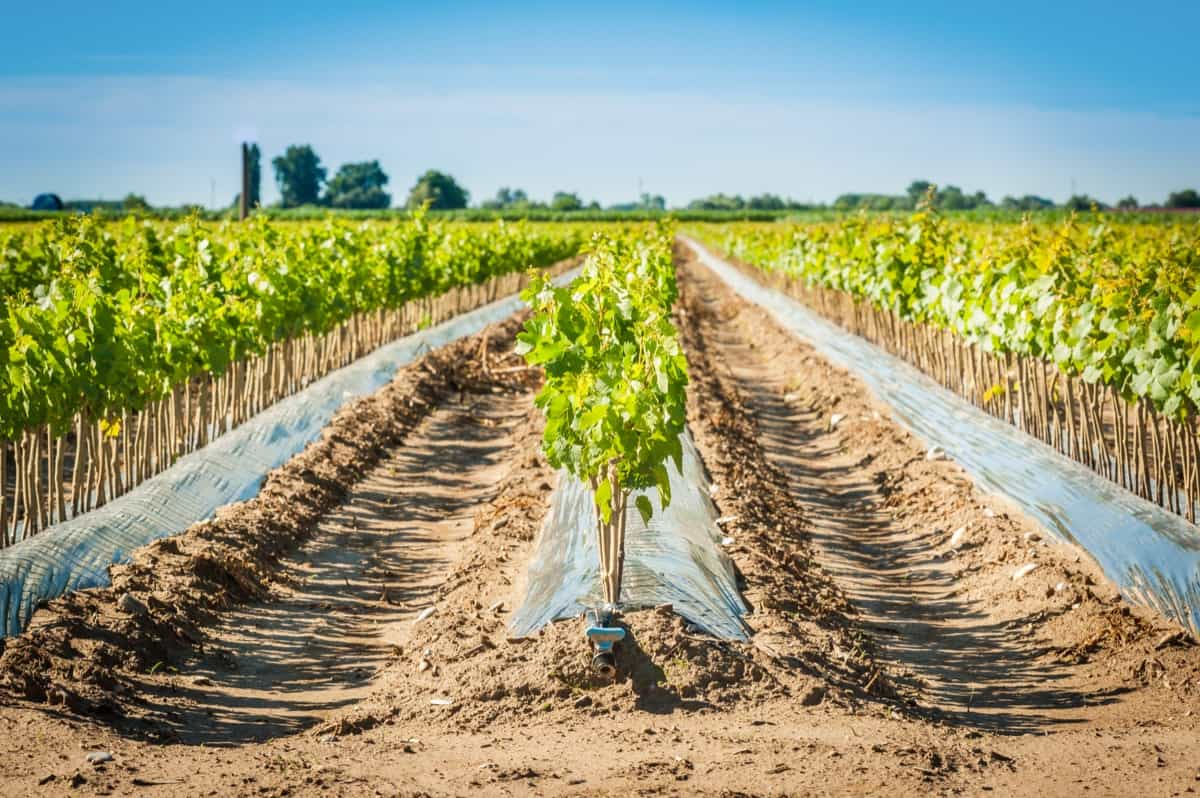
Grapes, known scientifically as Vitis vinifera, hold significant importance in the fruit industry, contributing to over 90% of global grape production. In this blog, we’ll delve into the anatomy of grape vines, grafting techniques for grape vines, aftercare, and maintenance tips, troubleshooting common issues, and even touch on advanced techniques.
Overview of Grape Farming
Grape (Vitis vinifera) is a highly valued species for table consumption and premium wine production. It originates from the Mediterranean region, central Europe, and southwestern Asia. Vitis vinifera accounts for over 90% of global grape production and is a vital fruit crop, contributing around 25% of the world’s fruit output. Grape cultivation thrives in temperate regions, particularly in warm, sunny climates with mild winters and dry periods during fruit ripening.
In India, grapes are successfully grown in tropical conditions in the west and south, as well as subtropical conditions in the north. Karnataka, Tamil Nadu, Maharashtra, and Andhra Pradesh are the major grape-growing states in India. Punjab, although a temperate region, has embraced grape cultivation, with an area of 420 hectares and an annual production of 28,607 metric tons.
Rootstocks have become essential in viticulture due to soil salinity, drought, and poor fruitfulness. Dog Ridge rootstock is widely accepted in India for its drought and salt tolerance. It shows moderate resistance to phylloxera and lime. Grafting, along with growth regulators like IBA, plays a crucial role in successful grape cultivation, and standardized techniques are being developed for commercialization.
Mastering the Art of Grafting in Grapes
Grapes, belonging to the genus Vitis, are versatile vining plants native to the northern temperate zone. They offer various uses, from being enjoyed as table fruit to being transformed into raisins, grape juice, or wine. These woody vines can climb to impressive lengths, sometimes exceeding 17 meters (56 feet), using their tendrils for support.
In case you missed it: How to Grow Grapes Organically in Maharashtra: Step-By-Step Cultivation Process and Production Management
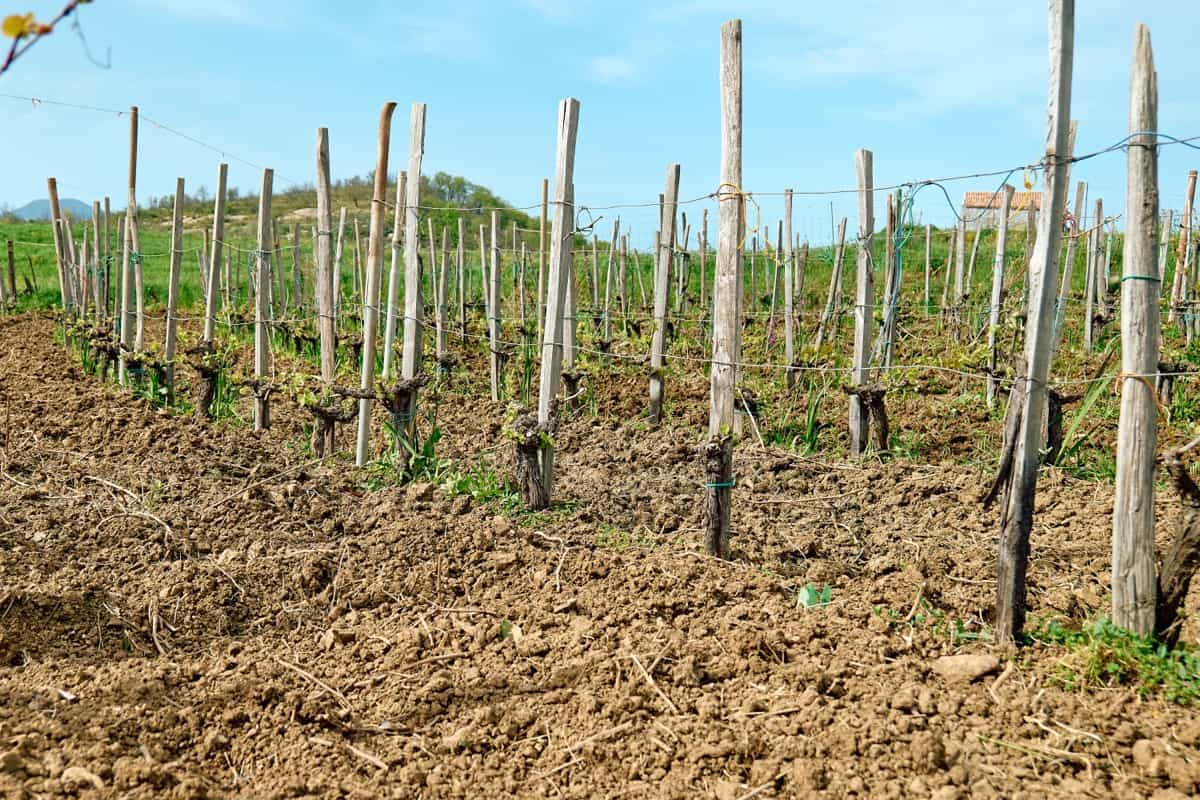
Grape leaves are palmately lobed and tooth-edged, while the fruit, botanically a berry, varies in color from black to green, red, or amber. Grapes are rich in minerals like calcium and phosphorus, providing a source of vitamin A. The European wine grape, Vitis vinifera, is the most commonly used for winemaking and boasts an extensive range of varieties, each with unique characteristics.
Other important grape species include the North American fox grape, used for table grapes and grape-based products, and the thick-skinned muscadine grape, favored for artisanal wines and jellies. Grape cultivation, dating back thousands of years, has been a fundamental part of human civilization, spreading across the globe to regions with favorable climates.
Proper vineyard management, including pruning, training, and protection against parasites, ensures optimal grape production. Harvesting grapes at the right moment, when the sugar content is high, and the skins are coated in a protective wax, is crucial for winemaking or other purposes for the desired outcome.
Characteristics of High-Quality Grapevine Material
- Correct Identity: The grapevine material should be of the intended variety and clone, ensuring accurate identification and maintaining varietal purity.
- High Health Status: The cuttings or vines should be free from serious viruses, pests, and diseases, as these can negatively impact plant health and productivity.
- Soundness: The material should be structurally sound, with good plant architecture, without physical defects or damage that could affect its growth and development.
- Physiological Competence: The grapevine material should possess physiological competence, meaning it has been grown and handled in a way that preserves its ability to develop into a healthy and productive vine.
- Fully Healed Graft Unions: The graft unions should be fully healed for grafted vines, indicating a successful fusion between the scion and rootstock.
- Quick Establishment: Quality nursery vines should establish quickly once planted in the vineyard, showing robust growth and adaptation to their new environment.
- Performance in the Vineyard: High-quality grapevine material should perform to expectations, exhibiting the desired traits and characteristics for the specific vineyard conditions and goals.
Preparing and Maintenance for Grafting in Grape
Rootstock Preparation
Prepare the rootstock cuttings for grafting in grapes; healthy and mature wood from the Dog Ridge rootstock and Flame Seedless variety was selected. The cuttings were taken from vigorous branches of the previous season’s growth, ensuring they were similar in size and appearance.
The Dog Ridge cuttings consisted of 4 internodes from the middle portion of the cane. The base of the cutting was made straight across below a node, while the top was cut at a 45° angle, about 2-2.5cm above a node. The Dog Ridge cuttings’ lower 3-4cm portion was treated with IBA (indolebutyric acid) at a concentration of 2000 ppm using a quick dip method, followed by a 15-minute shade drying period.
Scion Preparation
Flame Seedless sticks were obtained from one-year-old, healthy vines in the field for the scion. Dormant vines of similar thickness were chosen for grafting. Before grafting in August and September, the scion shoots were defoliated one week in advance. All the scion cuttings were treated with a fungicidal solution containing carbendazim and then shade-dried for 15 minutes. Scion cuttings with two nodes were used for grafting.
The grafting operations took place in the first and third weeks of February and the first weeks of August and September. Two grafting techniques, tongue grafting and wedge grafting, were performed. The basal portion of the rootstock cuttings was dipped in a 2000 ppm concentration of IBA to promote rooting. These grafted cuttings were placed in poly bags filled with a potting mixture of soil, sand, and FYM (Farm Yard Manure) in a 1:1:1 ratio and properly maintained.
In case you missed it: How this Farmer Making 60 Lakhs from 6 Acres Organic Grape Farm: Organic Grape Cultivation Sucess Story in India
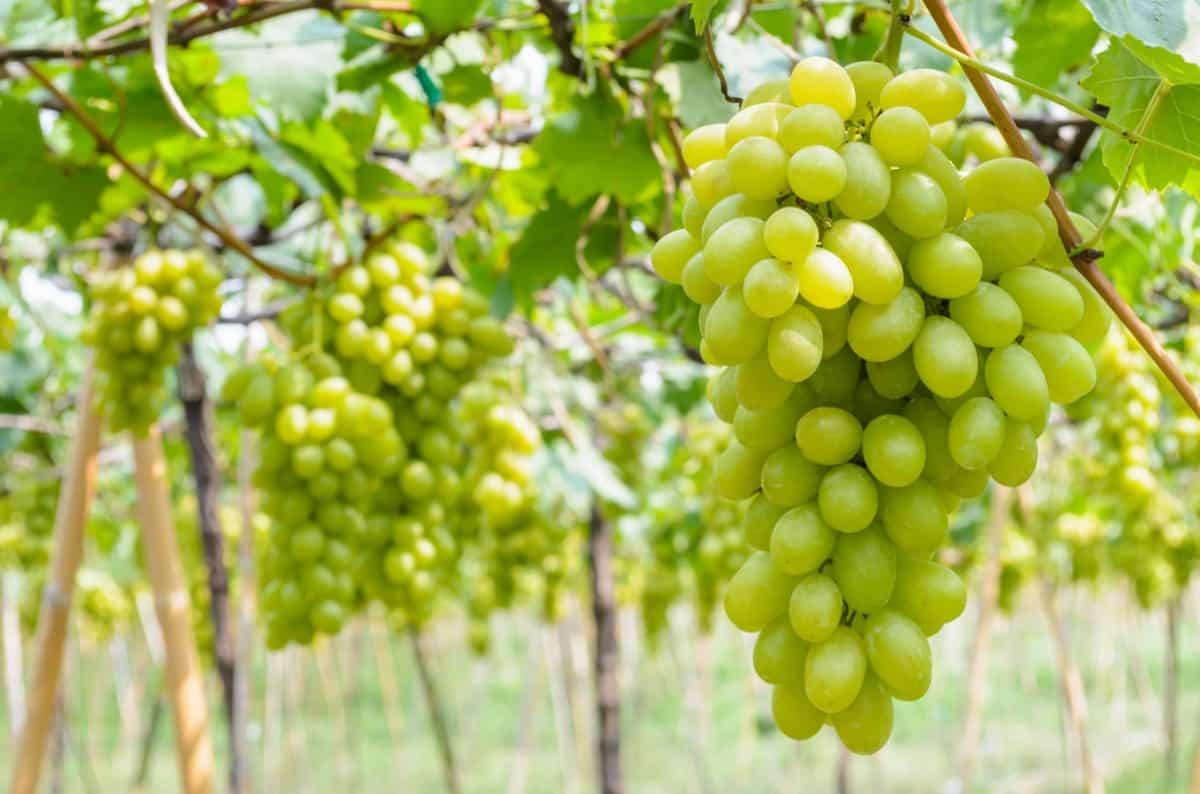
Grafting Techniques for Grape Vine and Maintenance
Grafting is a cost-effective method for propagating new fruiting varieties in vineyards. Three common grapevine grafting methods are cleft grafting, bark grafting, and whip grafting.
Method One: Cleft Graft
- Start by cutting the top of the vine to the desired height, leaving it about 4 inches shorter than the final head height.
- Split the rootstock down the center using a cold chisel, ensuring the split is at least 2 inches deep.
- Taper the bottoms of two dormant scions into a “v” shape, making straight, even cuts about 2 inches long. The outer end of the scion should be slightly wider than the inner edge.
- Wedge one scion into one side of the rootstock split and the other into the other, ensuring the cambium layers of the scions and rootstock meet.
- Wrap the split sides with rubber bands or tape and apply grafting compound generously to seal the split.
Method Two: Bark Graft
- Choose a vine with slipping bark and cut away the top portion using a saw.
- Cut a pattern into the basal end of a dormant scion, making a straight, slanted cut about 2 inches long. Make a secondary cut on the opposite side of the scion.
- Cut into the side of the rootstock near the cut top, creating a matching cut to the scion. Remove loose outer bark from the grafting location.
- Insert the scion into the rootstock’s cut, ensuring the cut surface of the scion fits into the wedge of the rootstock. Hold the graft with a rubber band or tape and apply grafting compound to seal the area.
Method Three: Whip Graft
- Slice the bottom of the scion at a slant, measuring 1 to 2 inches from the lowest to the highest point.
- Cut the top of the rootstock at a similar angle and length as the scion.
- Position the scion over the rootstock, aligning their cambium layers.
- Cut a tongue into the rootstock and scion, ensuring they fit together securely.
- Wrap the grafted area with heavy-duty tape and apply the grafting compound generously to seal the vine.
Factors Affecting and Maintaining Quality of Grafting Grape Vine
Several factors, including the identity of the source cuttings and rooted vines, soundness and physiological competence, pests and diseases, mother vine management, and nursery management, influence the quality of graftings, cuttings, and vines.
Identity of Source Cuttings and Rooted Vin
Using certified, true-to-type cuttings from established germplasm and mother vine collections is important to ensure the planting of correct vine varieties and reduce the risk of economic consequences. These collections provide propagators with certified material free of serious viruses and regularly monitored for misidentified vines and symptoms. However, certification does not guarantee physiological competence or freedom from other diseases and physical defects.
Soundness and Physiological Competence
Physical defects such as wounds, incomplete healing of graft unions, and damaged buds or tissue can affect the quality of cuttings and vines. Physiological competence, which refers to the ability of cuttings or vines to establish well and grow vigorously, is influenced by genotype, environmental factors, and mother vine management. Factors such as inadequate or excessive water and fertilizer, temperature extremes, and reduced photoperiod during shoot growth can impact the regenerative capacity of cuttings.
Pests and Diseases
Pests and pathogens transmitted in propagation can significantly impact the establishment and longevity of vines. Certified mother vines are typically produced to be free of serious viruses, but there is a risk of transmitting latent pests and pathogens. Asymptomatic infected cuttings can act as sources of inoculum, leading to cross-infection of batches of cuttings and nursery vines. Trunk diseases (TDs) pose particular challenges as they have multiple host species and are spread by various means.
In case you missed it: How to Control Pests and Diseases in Grapes: Causes, Symptoms, Chemical, and Biological Management
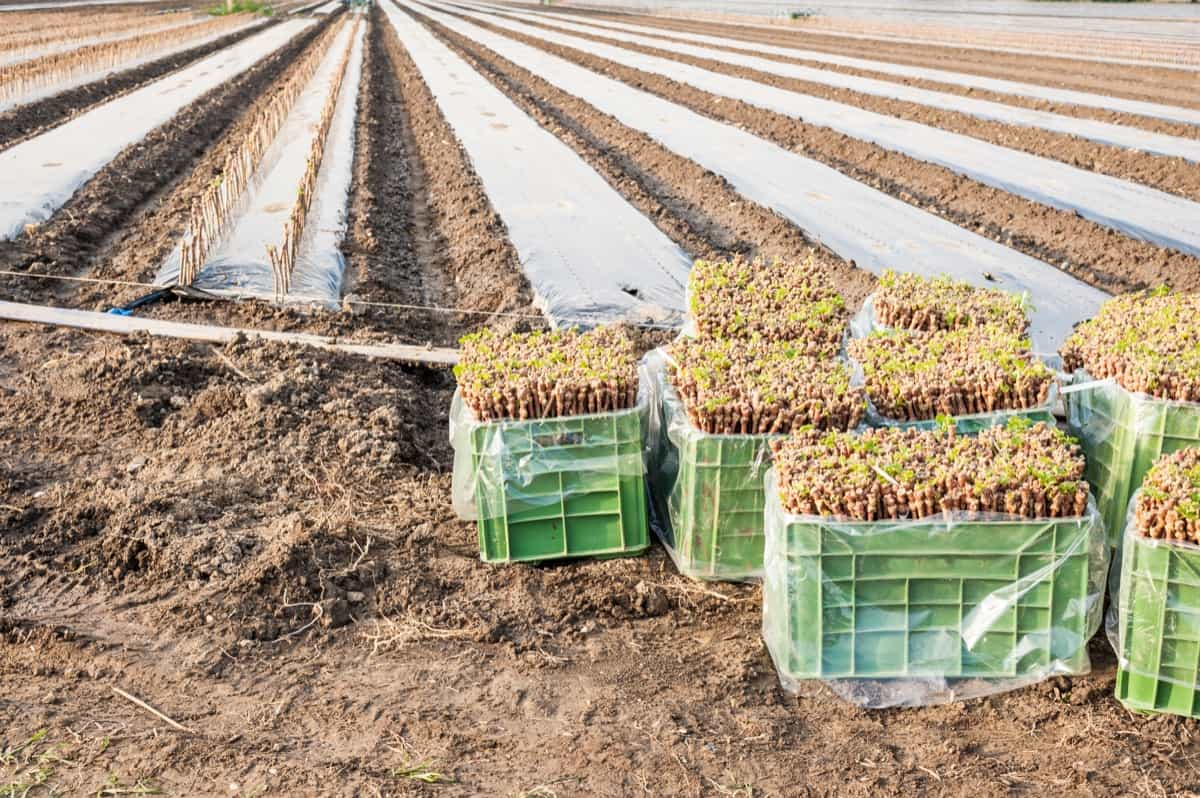
Mother Vine Management and Cutting Harvest
The management practices employed in mother vine plantings can affect cuttings and vines’ quality and physiological competence. Trellising systems, irrigation, and nutrition regimes can all play a role in production. Cuttings taken from mother vines that have borne heavy crops may perform poorly.
Nursery Management
Good nursery practices are crucial to preserve and enhance the quality of cuttings during the propagation process. Sanitation is a critical aspect of nursery management but is not always consistently applied. Inappropriate practices such as soaking cuttings in water can compromise sanitation and lead to material contamination. Careful attention to sanitation and handling practices is necessary to maintain the quality of propagating material.
Aftercare and Maintenance of Grafted Grape Vine
Grafted grape vines need regular aftercare to grow well. Grafting and callusing create contamination-prone wounds. Clean nursery facilities and equipment, properly dispose of plant waste, and manage wastewater and runoff to maintain hygienic conditions. Grafting chambers should be shielded from rain, wind-blown dust, birds, and pests. Regularly disinfect benches, grafting machines, and tools using sodium hypochlorite.
Delays in processing, high temperatures, agrochemicals, and ethylene from forklift exhaust can damage vine quality during propagation. Avoid soaking cuttings before grafting to avoid cross-contamination. Instead, clip scion buds before grafting and wrap vine cuttings with a clean, damp towel to prevent dryness and infection.
Callusing involves placing cuttings in clean boxes with a moist but not wet sterile material like perlite or vermiculite. Callusing works well at 26–29 °C. Callus tissue can prevent graft union xylem and phloem development. Disinfect callusing rooms routinely to prevent diseases. To keep cuttings healthy, check callusing box temperatures.
After callusing, discard poor-quality clippings. Callused cuttings should be hardened before planting to avoid transplanting stress. To prevent dehydration, apply a thin layer of grafting wax to the graft union and bud. Container-planting mixes should be soilless and weed-free. Field nursery soils should be well-drained and weed-free. Disease control requires pruning and spraying.
When digging vines from field nurseries, eliminate broken and substandard vines and lightly clip roots and shoots. Roots must be kept moist but not soaked to avoid anaerobic conditions and soil-borne pathogens. Bare-rooted vines can be “heeled in” or cold-stored. To avoid stress, freshly clipped vines should rest before being packed and stored in cold storage.
In case you missed it: Steps to Boost Grape Yield: How to Increase Fruit Size, and Production
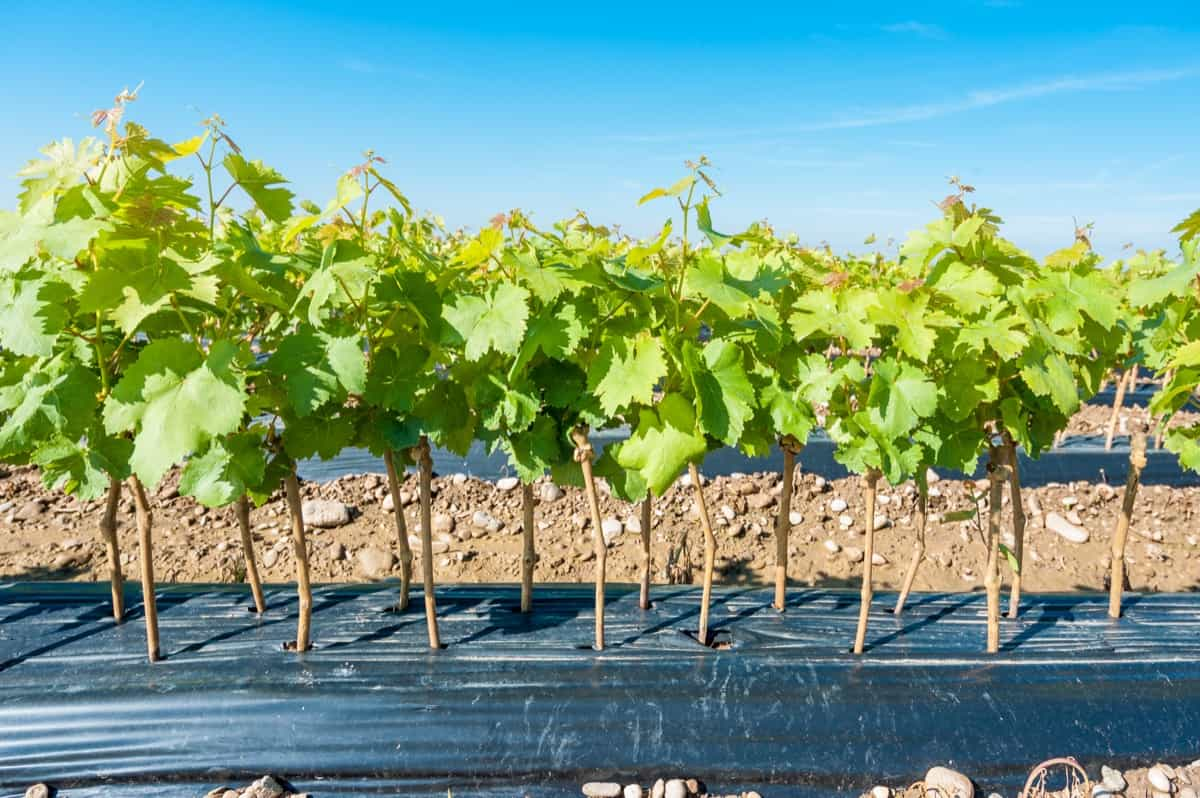
Tips for Successful Grafting in Grape Vine
- Ensure clean and sanitary conditions during the grafting process.
- Dispose of plant waste properly and manage wastewater and runoff.
- Protect grafting rooms from external contaminants like rain, dust, birds, and vermin.
- Regularly clean and disinfect benches, machines, and tools using suitable products.
- Avoid delays in processing and exposure to high temperatures, agrochemicals, and exhaust fumes.
- Refrain from soaking cuttings in water before grafting to prevent cross-contamination.
- Cut scion buds immediately before grafting and cover cuttings to prevent dehydration and minimize infection risk.
- Place cuttings in clean boxes with a moist, sterile medium for callusing.
- Maintain callusing temperatures between 26-29 °C and disinfect callusing rooms regularly.
- Remove any low-quality callused cuttings after callusing.
- Handle grafts carefully to avoid transplanting shock.
- Consider hardening the buds of callused cuttings before planting.
- Apply a thin layer of grafting wax to unwaxed graft unions and buds to prevent dehydration.
- Use soilless and weed-free potting mixes for container planting.
- Ensure well-drained field nursery soils free from serious weeds, nematodes, and pathogens.
- Implement regular pruning and a spray program for disease management.
- Discard damaged or sub-standard vines when digging from field nurseries.
- Lightly trim roots and shoots to promote healthy growth.
- Prevent dehydration of roots without soaking them in water.
- Store bare-rooted vines in appropriate conditions, allowing them to recover before cold storage to minimize stress.
In case you missed it: Best Fertilizer for Grapevines: Organic, Compost, Liquid, NPK, and Application

Conclusion
Mastering the art of grafting and practicing essential techniques is crucial for successful grapevine maintenance. By ensuring clean conditions, proper handling, optimal temperatures, and careful monitoring, growers can enhance their grafting skills and promote healthy growth for grape vines.
- Types of Pesticides Used in Agriculture: A Beginner’s Guide
- Economical Aquaculture: A Guide to Low-Budget Fish Farming
- 15 Common Planting Errors That Can Doom Your Fruit Trees
- How to Make Houseplants Bushy: Effective Tips and Ideas
- Innovative Strategies for Boosting Coconut Pollination and Yield
- Pollination Strategies for Maximum Pumpkin Yield
- The Complete Guide to Chicken Fattening: Strategies for Maximum Growth
- Natural Solutions for Tulip Problems: 100% Effective Remedies for Leaf and Bulb-Related Issues
- Revolutionizing Citrus Preservation: Towards a Healthier, Greener Future
- Natural Solutions for Peony Leaf and Flower Problems: 100% Effective Remedies
- Maximizing Profits with Avocado Contract Farming in India: A Comprehensive Guide
- Natural Solutions for Hydrangea Problems: 100% Effective Remedies for Leaf and Flowers
- The Ultimate Guide to Choosing the Perfect Foliage Friend: Bringing Life Indoors
- From Sunlight to Sustainability: 15 Ways to Use Solar Technology in Agriculture
- The Ultimate Guide to Dong Tao Chicken: Exploring from History to Raising
- The Eco-Friendly Makeover: How to Convert Your Unused Swimming Pool into a Fish Pond
- Mastering the Art of Delaware Chicken Farming: Essentials for Healthy Backyard Flocks
- 20 Best Homemade Fertilizers for Money Plant: DIY Recipes and Application Methods
- How to Craft a Comprehensive Free-Range Chicken Farming Business Plan
- Brighten Your Flock: Raising Easter Egger Chickens for Beauty and Bounty
- How to Optimize Your Poultry Egg Farm Business Plan with These Strategies
- Subsidy for Spirulina Cultivation: How Indian Government Schemes Encouraging Spirulina Farmers
- Ultimate Guide to Raising Dominique Chickens: Breeding, Feeding, Egg-Production, and Care
- Mastering the Art of Raising Jersey Giant Chickens: Care, Feeding, and More
- Ultimate Guide to Raising Legbar Chickens: Breeding, Farming Practices, Diet, Egg-Production
- How to Raise Welsummer Chickens: A Comprehensive Guide for Beginners
- How to Protect Indoor Plants in Winter: A Comprehensive Guide
- Ultimate Guide to Grow Bag Gardening: Tips, Tricks, and Planting Ideas for Urban Gardeners
- Guide to Lotus Cultivation: How to Propagate, Plant, Grow, Care, Cost, and Profit
- Agriculture Drone Subsidy Scheme: Government Kisan Subsidy, License, and How to Apply Online
- Ultimate Guide to Raising Araucana Chickens: Breed Profile, Farming Economics, Diet, and Care
- Bringing Hydroponics to Classroom: Importance, Benefits of Learning for School Students
- Ultimate Guide to Raising Polish Chickens: Breed Profile, Farming Economics, Diet, and Care
- Ultimate Guide to Raising Australorp Chickens: Profile, Farming Economics, Egg Production, Diet, and Care
- Silkie Chicken Farming: Raising Practices, Varieties, Egg Production, Diet, and Care
- Sussex Chicken Farming: Raising Practices, Varieties, Egg Production, Diet and Care